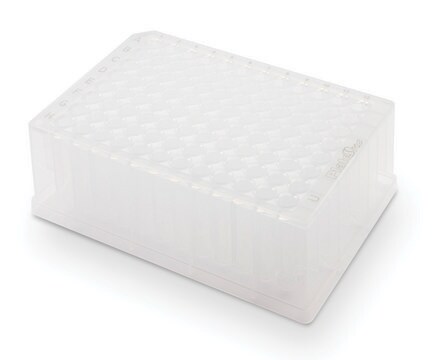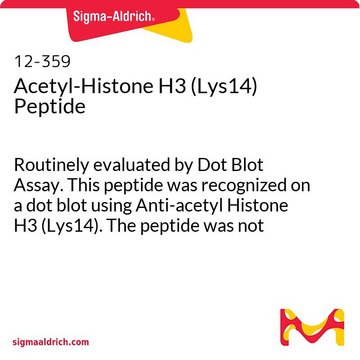Descrizione generale
Signal transducers and activators of transcription 1 (STAT1) gene is mapped to human chromosome 2q32.2-q32.3. STAT1 protein exists in two isoforms STAT1α and STAT1β with molecular weight of 91kDa and 84kDa, respectively. The encoded protein show ubiquitous expression. STAT1 is a member of STAT family of proteins.
Azioni biochim/fisiol
Signal transducer and activator of transcription (STAT) proteins are a family of latent cytoplasmic transcription factors involved in cytokine, hormone, and growth factor signal transduction. Seven members of the STAT family of transcription factors have been identified in mammalian cells: STAT1, STAT2, STAT3, STAT4, STAT5a, STAT5b, and STAT6. STAT proteins mediate broadly diverse biologic processes, including cell growth, differentiation, apoptosis, fetal development, transformation, inflammation, and immune response. Receptor-recruited STATs are phosphorylated on a single tyrosine residue in the carboxy terminal portion. The modified STATs are released from the cytoplasmic region of the receptor subunits to form homodimers or heterodimers through reciprocal interaction between the phosphotyrosine of one STAT and the SH2 domain of another. Following dimerization, STATs rapidly translocate to the nucleus and interact with specific regulatory elements to induce target gene transcription. Recently, STAT-1 has been implicated in modulating pro- and anti-apoptotic genes following several stress-induced responses. These effects are dependent on STAT-1 phosphorylation on serine-727 and require the C-terminal transactivation domain of STAT-1 to enhance its pro-apoptotic effect or inhibit its anti-apoptotic effects. The STAT-1 C-terminal domain has been demonstrated to be important for protein-protein interaction with other transcriptional activators. The reports that STAT-1-deficient mice develop spontaneous and chemically induced tumours more rapidly compared to wild-type mice and that STAT-1-deficient cells are more resistant to agents that induce apoptosis strongly support the argument that STAT-1 acts as a tumour suppressor.
Signal transducer and activator of transcription 1 (STAT1) plays a vital role in interferon (IFN) signaling. STAT1 undergoes phosphorylation on serine-727. This Phospho-Stat1 regulates pro- and anti-apoptotic genes following several stress-induced responses. STAT-1 interacts with p53 and promotes p53-mediated transcriptional gene activity and apoptosis. STAT-1 is an essential factor of stress-induced and DNA damage-induced checkpoint pathways and thus, acts as a tumour suppressor. STAT-1 functions as a pro-apoptotic factor in cardiac myocytes, brain or liver exposed to ischaemia–reperfusion injury. Thus, inhibition of STAT-1-activated pathway by epigallocatechin-3-gallate (EGCG) can be considered as a potential therapeutic method against ischaemic tissue injury. Repression of STAT-1 expression by human papillomavirus (HPV) oncoproteins E6 and E7 at transcription level is essential for genome amplification and maintenance of episomes, which is suggested to have a crucial role in viral pathogenesis.






